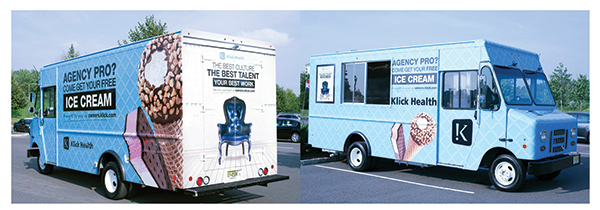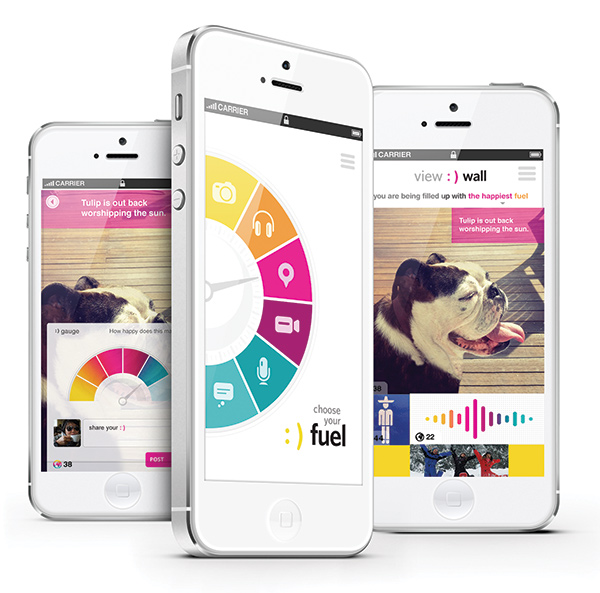Pharma marketers work in a heavily restricted environment. They are trained to play it safe and remain compliant with the industry’s many regulations. But sometimes it pays to break the rules, to disrupt the status quo and experiment with new marketing methods that aren’t tried and true.
We see it constantly with consumer goods marketers. For instance, Oreo’s now infamous, “You Can Still Dunk In The Dark” Tweet during the blackout at the 2013 Super Bowl. Or just last month when Samsung rebranded Terminal 5 at Heathrow Airport as “Terminal Samsung Galaxy S5,” by filling all available ad space with promotions for the Galaxy S5. And if you were in Australia recently you may have seen a Coca-Cola vending machine that used geo-location, facial recognition technology, social media input and weather to deliver targeted ad campaigns via a clear LED digital screen on its front door. This is disruptive marketing. You may also know it as street, stunt or even stealth marketing. These are campaigns that demand people’s attention. At a time when it is easier to ignore traditional media campaigns, it pays to deliver something people can’t ignore—and often don’t want to ignore.
PM360 reached out to pharma marketers for tips on creating truly disruptive campaigns that demand attention.
1. Do The Unexpected
“When looking outside healthcare for strategies that disrupt the status quo and go beyond traditional tactics,” says Frank X. Powers, President of Dudnyk, “I think immediately of the campaign Amazon and Nissan pulled off in 2013 and promoted in January 2014.”
As part of a co-promotion to raise awareness, Nissan offered its Versa Note automobiles through Amazon’s website (amzn.to/1ngu5cU) with a custom product page very similar to Amazon’s standard pages. Three of the 100 cars sold through the online retailer were packaged and delivered in the familiar, albeit oversized, Amazon boxes. Video crews were on hand to film the deliveries to gain enduring value (bit.ly/1k73WdJ).
“The campaign’s marketing goal was to create buzz with something unexpected and remarkable,” says Powers. “They did just that by breaking the rules of car shopping.”
2. Don’t Be Afraid to Go Guerilla
“The two main reasons for using disruptive marketing,” explains Peter Flaschner, VP Strategy at Klick Health, “are to attract attention to a cause, a product or service and change people’s ideas of what to expect from a brand or product.”
Klick Health practiced what they preached with a guerilla campaign designed to attract new talent. The “Ice Cream” campaign was conceived and planned two weeks prior to its September 2013 launch. The agency wrapped a 25-foot ice cream truck and smaller ice cream carts in Klick branding and descended onto the streets of New York, New Jersey and Philadelphia (see an example of the ice cream trucks below). They stopped at more than 30 different competitors’ agencies with free ice cream and announced their arrival at each location with Tweets and elevator ads in their buildings.
3. Refine Your Target Audience
“Sometimes changes that seem relatively small, such as refining the profile of the desired target audience,” explains Rob Rebak, Chairman and CEO at QualityHealth, “can have a dramatic impact.”
QualityHealth recently launched a marketing program for a new diabetes medication with an initial target audience for the brand consisting of diagnosed and info-seeking diabetes patients who are taking 1+ oral antidiabetic drugs (OADs). The program initially drove a 6.4% brand discussion rate and .3% of the program participants received the brand.
In the process of optimization, the agency did a post-program analysis that compared the original audience with a subset of patients taking 2+ OADs, a sub-group of patients who were presumably either sicker and less satisfied, or more treated and therefore more controlled. And they learned something very valuable. The brand discussion rate went up to 9.1% in the 2+ OAD group—a 40% increase. The increase in those who received the brand was even more remarkable—up to 1.3% in the 2+ OAD group, a more than 300% increase. The agency was able to shift its focus to a narrower, more focused audience and deliver a more effective and efficient campaign.
4. Create Something Meaningful
“The first step to disruptive marketing: Create experiences that are relevant to the customer and not just the brand,” explains Elizabeth Elfenbein, Partner, Creative at The CementBloc. “The next step is to understand where your brand can fill an unmet need. Don’t make it branded, but do make the customer realize that they need it.”
The CementBloc followed these steps when they developed their Happy Fuel microblogging social network, which gives users a simple, fun way to “live in the happy” and pay it forward (see below). After reading in the World Happiness Report, commissioned by the United Nations, that happy and healthy go hand in hand, the agency recognized an opportunity to deliver something that could raise happiness, and healthiness, on a local and global level. They developed the idea of “happy media” and created Happy Fuel as a place where people can discover, store and share the things that fuel their happy, such as songs, photos, videos, places, sounds or thoughts.
“We took this opportunity to create something unique in our industry to make a meaningful difference in people’s lives,” adds Elfenbein. “The Happy Fuel mobile and web apps give people a way to fuel their happiness and pay it forward.”
5. Reshape Your Brand
“When I think of market disruption, I think of technological sea changes that reshaped, destroyed and rebuilt markets,” says Altay Akgun, SVP, Creative Director and User Experience at Calcium. “Remember point-and-shoot digital cameras? Today, ‘digital camera’ pretty much means an SLR for pros and enthusiasts; for the rest of us, a smartphone is the camera of choice.”
This camera extinction shows that disruptive marketing is great when you have a truly disruptive product, explains Akgun. However, in pharma a new product can mean a billion dollars and 15 years! The solution: Reshape your brand around patient and prescriber needs and wants.
“Is your product in a crowded, commoditized marketplace?” asks Akgun. “Then put a stake in the ground on safety issues—even if your safety profile is no different from your competitors. If you talk safety first, your product becomes the ‘safe’ choice. Costly biologic therapy? Shift the burden of patient education and support to the brand so docs won’t hesitate to write that script.”
Akgun also advises: Use technology wisely.
“Develop mobile sites and apps that make patients say, ‘Wow! I didn’t know you could do that!’” he suggests. “Get into your users’ heads, understand what makes them tick and integrate the brand experience with their lives in a sensible way.”









